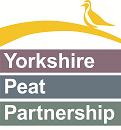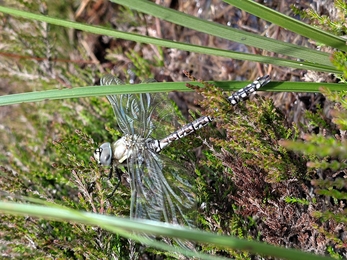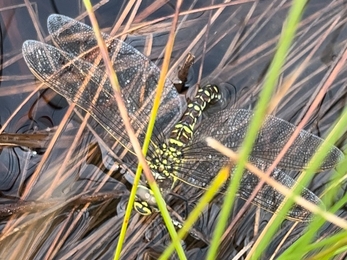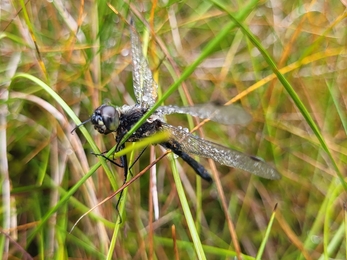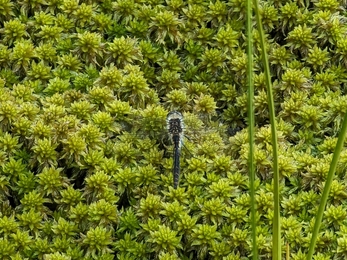...although if you were driving past, you might not believe it to be such a special place. You may note the white cottongrass heads in early summer but aside from that, it might look like a jumble of purple moor grass and a patch of willow trees.
This site, though, has been my office for the past six months, and the diversity of wildlife it provides for is undeniable. For such a little site compared to our upland peat bogs - approximately 40 hectares - it is home to a catalogue of species. My regular walk across the site starts at the southeast corner of the bog where I cross Black Sike, a man-made drainage channel, and head through the rushes towards the raised dome.
